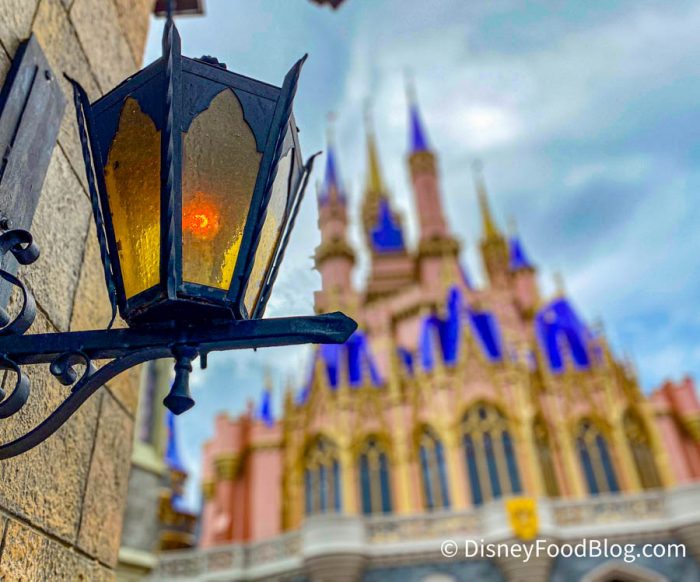The Walt Disney Company has had quite the fiscal year so far.
You might remember the Q2 Earnings Call back in May that showed just the beginning of what the global health crisis would mean for Disney. And today, the Q3 Earnings Call brought us more outcomes from the unprecedented park closures, entertainment shut-downs, and cruise catastrophes brought by the last four months.
Some of Disney’s segments — most prominently the Parks, Experiences, and Products segment — saw income numbers plummet. But despite billions in losses, Disney’s stock skyrocketed after hours last night. But why?
As you can imagine, the pandemic had a hugely negative effect on several Disney segments and the company as a whole. According to Disney Chief Financial Officer Christine McCarthy, the company is estimating that the impact was approximately a hit of $3 billion dollars to operating income.
Compared to 2019, the company saw a 72% decrease in operating income from approximately $4 billion for the quarter down to approximately $1 billion. This has also had a significant effect on earnings per share which are just $0.08 compared to 2019’s $1.34.
Of course, the biggest hit was to the theme parks. Disney’s Parks, Experiences, and Products segment saw an operating loss of almost $2 billion compared to an operating income of $2 billion in 2019. Beyond that, McCarthy explains that the costs of restarting segments through the end of fiscal 2021 could total approximately $1 billion.
But despite these numbers, Disney’s stock prices soared in the hours after the Earnings call. At market close (prior to the report and call), prices were sitting at 117.29. Now, they’re up another 5.02, sitting at 122.31 at the time of writing. So what made this call a POSITIVE one for stockholders? Let’s take a look.
Disney+ is winning worldwide.
First of all, Disney+ has been a major win for the company. Disney CEO Bob Chapek notes, “Despite the ongoing challenges of the pandemic, we’ve continued to build on the incredible success of Disney+ as we grow our global direct-to-consumer businesses.”
And the success of Disney+ HAS been incredible. As of the end of the quarter, Disney+ had 57.5 million paid subscribers. Now, the service has surpassed 60.5 million paid subscribers globally. Disney+ is exceeding projections in every major market, and by the end of the year, the service will expand even further.
Chapek explained that he not only believes they will be able to sustain the levels of growth they’re seeing but that they will go beyond them. He explained that the company isn’t planning to rest on their already-produced laurels.
The company has found that new content brings in new subscribers, increases engagement, and retains subscribers. With anticipated content on the horizon — Marvel shows, The Mandalorian, and now the premiere access release of Mulan — Chapek expects new content to propel viewership and growth.
Click here to learn about how YOU can watch Mulan on Disney+!
Walt Disney World is still operating at a “net positive contribution level.”
Another pro noted on the call for investors is that Walt Disney World is operating at a “net positive contribution level” since it has reopened. McCarthy explained that they had projected a higher upside, but health concerns in Florida have caused revenues to exceed variable costs to a lesser extent than expected (that means they’re not making as much from the parks as they thought they would). Still, Disney is reporting that “net positive contribution,” even at current attendance levels.
Chapek explained that they are welcoming numbers of guests that are pretty close to the percentage of the park they can fill each day with social distancing guidelines. Attendance is currently around 50% locals and 50% travelers, so the company has made adjustments to account for the fact that fewer people are traveling than expected by increasing park availability for locals — many of whom are Annual Passholders.
Chapek and McCarthy agree that the parks will be in good shape once health concerns level out in Florida and as regular travel patterns to Orlando pick up again. The net positive contribution level and shiny outlook on the coming months may read as a boon for some shareholders.
Want to see who is going to Disney World right now? Click here!
The company has “excessive” $23 billion in cash set aside, partially as insurance.
Beyond that, the company is extremely liquid with around $23 billion sitting on its balance sheet as cash. That amount accounts for a lot, so much so that one analyst on the call even called it “excessive.” McCarthy explained, “We remain laser-focused on prudently managing our cash outflows and preserving liquidity.”
Essentially, the Disney company is taking a very conservative approach to managing liquidity — so that the money (in this case $23 billion) is there if they need it. McCarthy explained that they were able to raise that money in March and April with favorable interest rates, when there was little visibility into how long the fiscal aspects of the global health crisis would continue.
Ultimately, the money is there “just in case.” McCarthy called it something like an insurance policy in case we see the effects of the global health crisis continue for a while. The stance is that a lack of liquidity can destroy a company, so Disney has taken an aggressive approach in ensuring liquidity. And many investors may see this as a solid foundation in an uncertain time.
Significant cost-cutting in the quarter was a benefit to the bottom line.
The executives on the call were also able to tout success with significant cost-cutting in the quarter. Overall, Disney is spending $700 million less than in 2019 on capital spending projects, including lower spending at domestic parks and resorts.
McCarthy explained that the company did a great job with cost mitigation on opening the parks. Part of this was the furlough of over 100,000 people. As you can imagine, they will be spending more on labor in the fourth quarter as many of these Cast Members return to work. Still, Disney’s effective and swift action at the beginning of the crisis, and the resulting numbers, presents as a good sign for investors.
Disney will continue to take an aggressive approach with the direct-to-consumer segment after seeing great success so far.
And finally, Chapek assured during the call that the prioritization of the Direct-to-Consumer Segment would continue, especially following the amazing success of Disney+ and other platforms. In fact, the global reach of all subscriber services owned by Disney has resulted in over 100 million paid subscriptions.
In Chapek’s words, “We’ve been very focused on advancing and growing our direct-to-consumer business which we see as our top priority and key to the future of our company.” It seems this aggressive approach will continue as well. Not only is Disney looking to continue growth with Disney+, but they are introducing a new Star-branded general entertainment offering into the market in 2021. Promises of growth are certainly attractive provided Disney can deliver.
Overall, the call held a tone of optimism in reference to the coming quarters and years for the Walt Disney Company. In fact, despite billions of dollars of losses, there was very little negative noted on the call. Chapek said, “Personally, I am as optimistic as I could be about our way forward,” and the rise in stock prices show that some investors feel the same.
Click here to learn more about the state of Disney’s finances.
What are your thoughts about the Q3 Earnings Call? Tell us in the comments!













